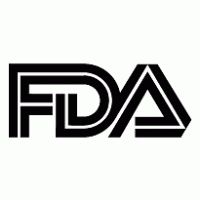FDA Approves Omaveloxolone as First Friedreich’s Ataxia Drug
The approval for omaveloxolone was supported by open-label data showing benefit of care for up to 3 years.

The US Food and Drug Administration (FDA) has approved omaveloxolone (Skyclarys) as the first therapy indicated for the rare degenerative disease Friedreich’s ataxia.1
The approval for Reata Pharmaceutical’s oral once-daily therapy mark a milestone in the pharmaceutical strategy for an inherited disease that currently impacts about 5000 diagnosed patients in the US. Sentiments expressed surrounding the approval—announced on February 28, colloquially celebrated as the awareness holiday “Rare Disease Day”—reflect the critically unmet need in Friedreich’s ataxia that omaveloxolone can help fulfill now.
"The entire Friedreich's ataxia community including patients, clinicians, scientists, pharmaceutical companies, government agencies, and others have worked collaboratively for decades to enable therapeutic development for this debilitating disease,” Friedreich’s Ataxia Research Alliance chief executive officer Jen Farmer said in a statement. “Today, we celebrate the impact of an engaged patient community, and we are grateful to the FDA and Reata for working together on the approval of SKYCLARYS, the first therapy approved in the United States for adult and adolescent patients aged 16 years and older with Friedreich's ataxia.”
Omaveloxolone’s approval was supported by efficacy and safety findings from the randomized, double-blind, placebo-controlled MOXIe Part 2 trial as well as a post hoc Propensity-Matched Analysis of the open-label MOXIe Extension study.
Investigators in MOXIe Part 2 randomized patients with genetically confirmed Friedreich’s ataxia and a baseline modified Friedreich’s Ataxia Rating Scale (mFARS) scores between 20 – 80 to either 150 mg daily omaveloxolone or placebo. They sought a primary end point of change from baseline in mFARS versus placebo at week 48 among 82 patients without severe pes cavus at baseline.
Patients receiving omaveloxolone achieved statistically significant lower mean mFARS scores versus placebo at week 48, indicating less impairment due to disease (mean difference, -2.41; P = .0138). Common adverse events among treated patients included elevated AST/ALT levels, headaches, nausea, abdominal pain, fatigue, diarrhea and muscoskeletal pain.
Investigators additionally observed in the post-hoc analysis that patients who continued omaveloxolone in an open-label extension for ≤3 years sustained mFARS improved versus untreated patients.
Per the FDA, Friedreich’s ataxia generally develops in children and teenagers, and is characterized by progressive damage to the patient’s spinal cord, peripheral nerves and the brain.2 It can result in uncoordinated muscle movement, difficulty balancing and walking, changes in speech, and a reduced lifespan.
It’s currently understood to affect about 1 in every 50,000 people.
“Friedreich's ataxia is a debilitating neuromuscular disease that progressively robs patients of their mobility and independence,” Susan Perlman, MD, clinical professor in the Department of Neurology at UCLA’s David Geffen School of Medicine, said in a statement.1 “The approval of SKYCLARYS represents an important step forward in the treatment of Friedreich's ataxia, providing physicians with the first disease-specific treatment option approved for patients living with this ultra-rare and progressive disease.”
References
- Reata Pharmaceuticals Announces FDA Approval of SKYCLARYS™ (Omavaloxolone), the First and Only Drug Indicated for Patients with Friedreich’s Ataxia. News release. Reata Pharmaceuticals. February 28, 2023. https://www.businesswire.com/news/home/20230228006450/en/Reata-Pharmaceuticals-Announces-FDA-Approval-of-SKYCLARYS%E2%84%A2-Omavaloxolone-the-First-and-Only-Drug-Indicated-for-Patients-with-Friedreich%E2%80%99s-Ataxia
- FDA approves first treatment for Friedreich’s ataxia. News release. FDA. February 28, 2023. https://www.fda.gov/drugs/news-events-human-drugs/fda-approves-first-treatment-friedreichs-ataxia